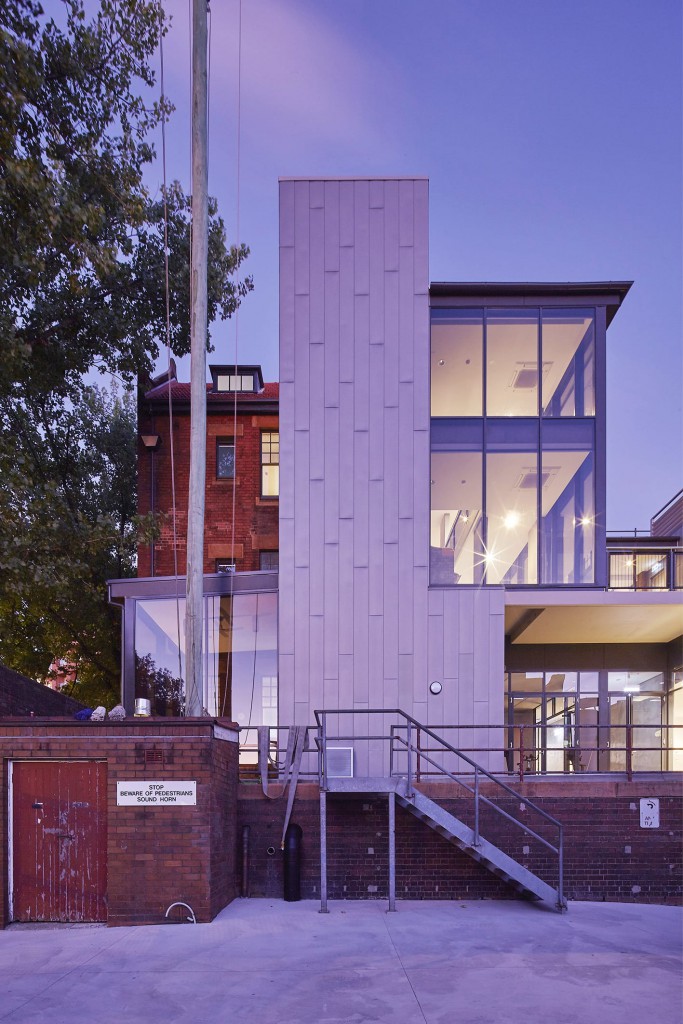



table of contents

previous articles

next articles
Feature article



CONTENTS
- The facade was cleaned down following structural works where brick dust was collected to colour match and conceal holes in the brick work. The bell tower boarding will be removed and replaced with glazing.
Between 1890 and 1911, Government Architect Walter Liberty Vernon designed and delivered over fifty projects in NSW, some of which are still standing and in use. One of those is the Pyrmont Fire Station located on the corner of Gipps and Pyrmont Streets in Ultimo, Sydney. It was built in 1906 to address the compounding fire danger posed by an intense growth in industrial development in the area during the first decade of the 20th century.
The original building is Federation Free Style and constructed of red clay face brick in English bond with lime mortar over a rusticated sandstone plinth and has decorative sandstone detailing emphasising door and window openings and other features. The colours and textures of the brick and sandstone are in stark contrast. The Pyrmont and Gipps Street facades have a strongly-defined base, middle and top with several asymmetrical features.
Inside, the building originally consisted of two engine bays with attendant stables, a family size officer apartment and single men’s room on the ground floor. There were also apartments for six families on the second and third floors with a laundry, drying yard and watch tower at roof level.
After the building had closed and reopened twice, Fire and Rescue NSW commissioned GroupGSA in 2013 to refurbish the derelict upper floors and extend the operational fire station to provide office accommodation for staff as part of their relocation program from their current head office in Elizabeth Street, Sydney.
Major works included upgrading the building’s structural integrity to a Category 4 seismic stabilisation. This was achieved with a design by Birzulis with construction by Artel Constructions and MAXBuild installing new steel portal frames to shore up and protect the existing heritage envelope including the corner bell tower. The portal frames span two floors and tie to reinforced joist flooring, which is braced to the frame with a series of flat bar cross bracing. The external façade is then tied to the perpendicular walls with a HeliBar system.
A new extension was also added to the building over the three floors. The contemporary addition is inspired by design methodologies adopted a century ago – innovation, decoration and social creation.
The choice of interfacing materials complement each other and flow between internal and external spaces in an asymmetrical fashion much like the building before it. Original concrete floors have been topped with white concrete, marking the extent of the original building footprint and in contrast, grey concrete floors define the extended premises.
Vertical circulation zones are clad in zinc, linking all three floors and the diverse departments of the organisation.
GroupGSA and the team of multidisciplinary consultants have ensured that the work of the former Government Architect Walter Liberty Vernon continues to function as it was intended but now more aligned with contemporary work processes. 
Janine Graves is an associate at GroupGSA and was project architect for Pyrmont Fire Station
Project: Pyrmont Fire Station
Architect: GroupGSA
Client: Fire & Rescue NSW
Project manager: Public Works
Completion: 2016
Photos: Tyrone Branigan












